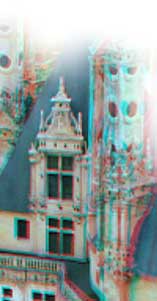 |
||
 |
Multimodal Brain Visualization.
In 2004 and 2005, my work in the UCLA Laboratory of Neuro Imaging included the programmation of complex modeling scripts for Newtek Lightwave. Lightwave is a 3D CG modeler/animator, originaly developed on amiga and still used in full feature movie production, under MacOS and Windows. I started with adapting existing Lightwave scripts to generate 3D models my coworker, John Bacheler needed it for a movie he was doing. From that point I've extended the scripts to a complex tool who generates 3D models out of fMRI and DTI file, along with probabilistic atlas and surface models.
Here's some pics [DTI] [fMRI] [Anatomy] [Atlas]
What are DTI, MRI, fMRI, Atlas, surface models ?
MRI stands for Magnetic Resonance Imagery, and is a non-invasive (we don't stip one skull to piture one's brain) volumetric (we get 3D datasets) imagery system based on the mesurement of the atom's cores behavior when you agitate them using a huge magnetic field. Huge field means it coud wipe out any floppy, bank card, memory card in a snap, just by entering the room where the MRI scanner is. If you hold your keyring hand, the first thing you'll see is that it stands horizontal, aiming at the room center, where the scanner is. The second thing you'll see id the street's curb, for you'd be thrown out of the building in seconds, for it's absolutly forbiden to play with metalic objects in a MRI room. Your keys were to escape your hold, they could injury (even deadly) anyone stanting in the scanner, or worse, damage that multimillionbucks equipement.
Fine-tunning the magnetic field, you can get a high-resolution picture of the brain anatomy [my head slice]. Using 3D visualization tools, you can generate models of one brain or head. This is classic MRI, just high-tech radiology. For instance, anatomic scans of the brain are done by looking at the water concentration, for it's lower in gray matter then in white matter.
Fancy applications are, among others, fMRI and DTI.
fMRI, stands for functional MRI. It priciple is to tune the scanner to detect iron cores. For iron cores are mostly presents in hemoglobyn, you're looking at blood flow. If you're recording blood flow during the scanned persons performs a task, say reads a sentence, you'll "see" what part of the brain is currently provided in Oxigen. From that point you can guess what part of the brain is activated by that reading task. Scientist are currently recording people doing tens of fine-tuned stasks in order to help understand brain's functionnal anatomy.
DTI, stands for Diffusion Tensor Imagry. Its principle is to tune the scanner to detect water molecules and to shake them if different directions. Depending on how easy they shake, you can figure out if you're shaking them in a direction who's paralel or not with the brain fibers direction. For the brain fiber direction is likely to be axones direction, you can figure out the connections paths in the brain.
Mapping the brain : making atlases
The brain, guess what, is a very complex system, performing quite a huge count of tasks. MDs would like to have a map of the brain, say to be able to remove a tumor without let you blind, deaf of unable to remember your name. The trouble is that every brain has his very hown shape, like a fingerprint. If we all share the same global layout. like we see with the back and we speak with the uper-left of our brain, there's no way to know for sure what task is performing such-and-such piece of your gray matter.
The Laboratory of NeuroImagery is part a worldwide project to establish a map of the brain. We're compiling hundreds of MRI scans and establish a probabilistic atlas, that should allow us to answer "there's such percent chances that this part of that brain host that very function" It a SVPA, sub-volume probablisitic atlas.
|
Bernard Mendiburu 6, rue Civiale, 75010 Paris, France |